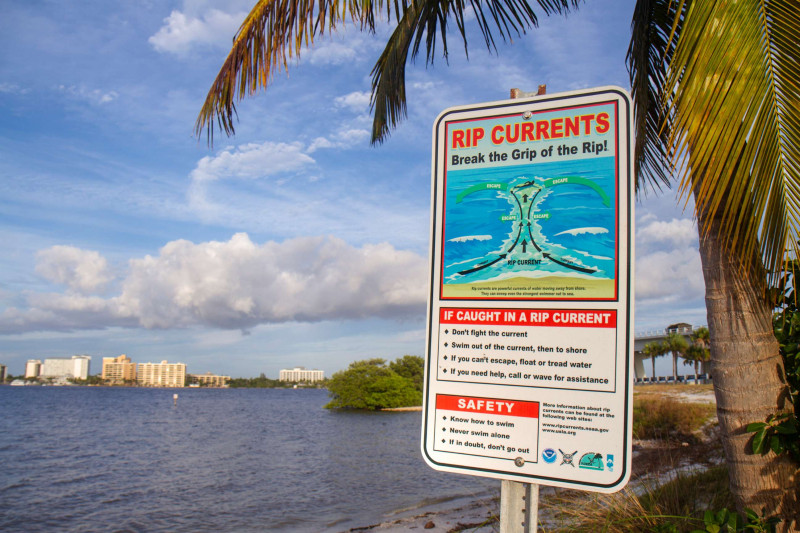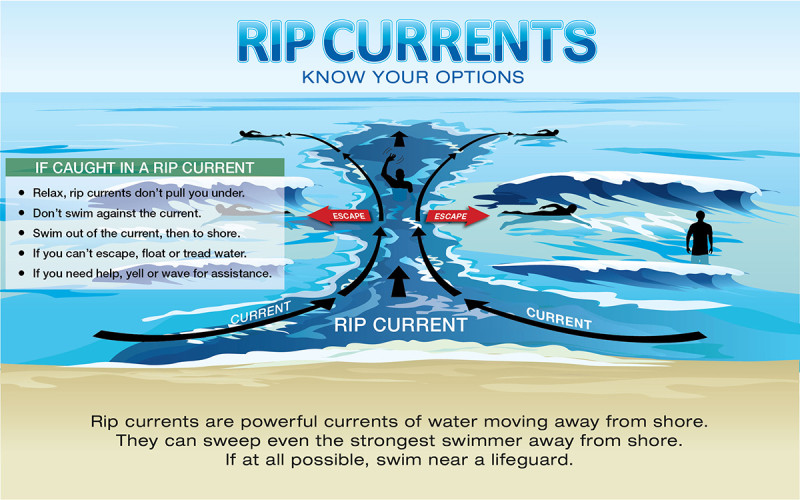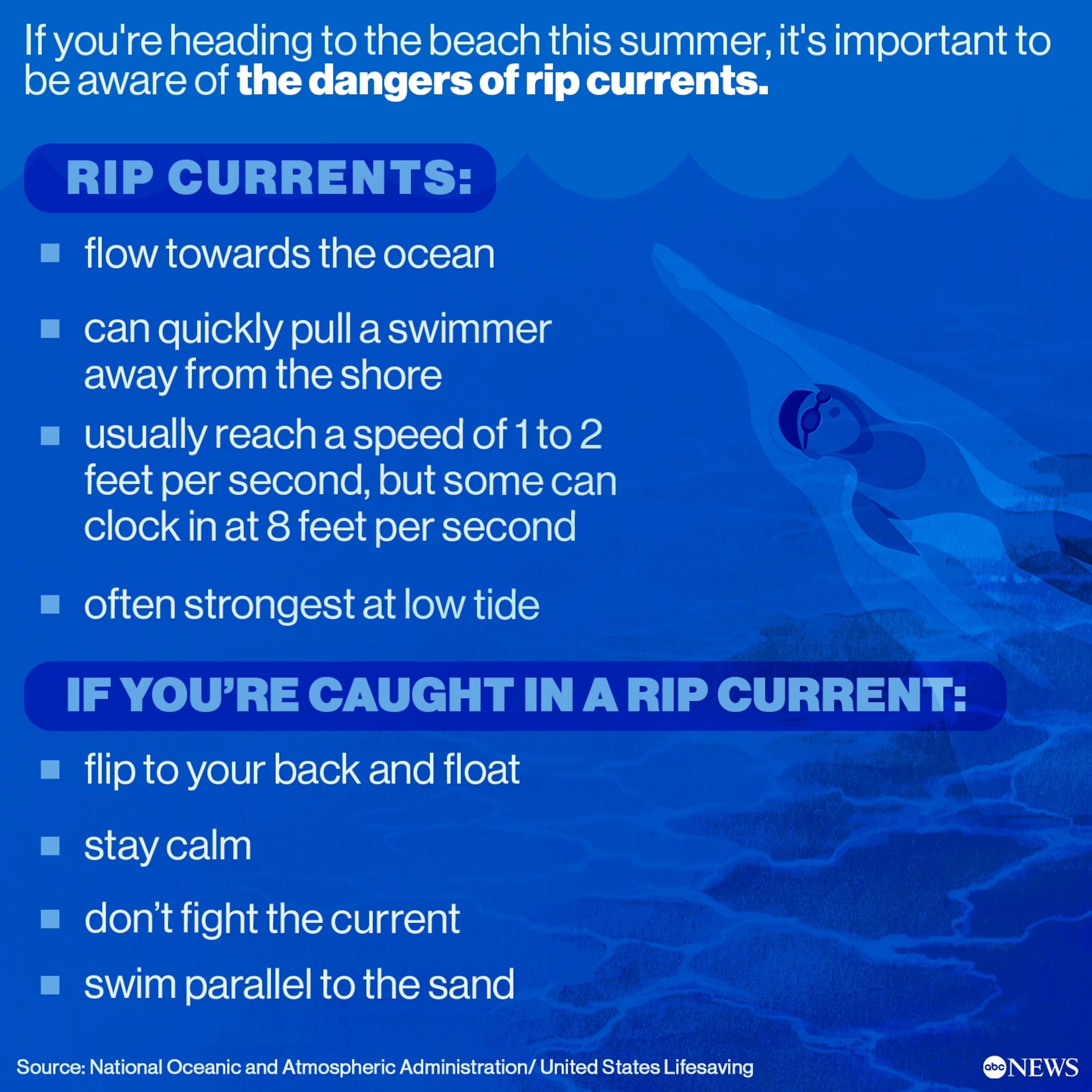Rip currents: What to know about the dangers and how to escape
Hurricane Lee is churning in the Atlantic Ocean and bringing dangerous rip currents and huge waves to the East Coast this week.
Here's what you need to know about rip currents and how to stay safe:
A rip current, which flows out toward the ocean, can quickly pull a swimmer away from the shore.
Rip currents usually reach a speed of 1 to 2 feet per second, but some can clock in at 8 feet per second, which is faster than an Olympic swimmer, according to the National Oceanic and Atmospheric Administration.

MORE: Hurricane Lee's latest forecast: Northeast to see dangerous rip currents, huge waves
If you're caught in a rip current, the first step is to flip to your back and float. Staying calm and not exhausting yourself by fighting against the current is essential to avoid drowning, NOAA said.
Next, you want to swim parallel to the sand until you escape the rip current, which is usually less than 80 feet wide, according to NOAA.

Experts advise looking up water conditions before heading to the beach and, if possible, swimming near a lifeguard.
Rip currents are often strongest at low tide, experts added.
According to the United States Lifesaving Association, you may be able to spot a rip current by looking for: a difference in water color; a line of foam or debris moving out to sea; or a narrow gap of darker, calm-looking water in between breaking waves.

Disclaimer: The copyright of this article belongs to the original author. Reposting this article is solely for the purpose of information dissemination and does not constitute any investment advice. If there is any infringement, please contact us immediately. We will make corrections or deletions as necessary. Thank you.




